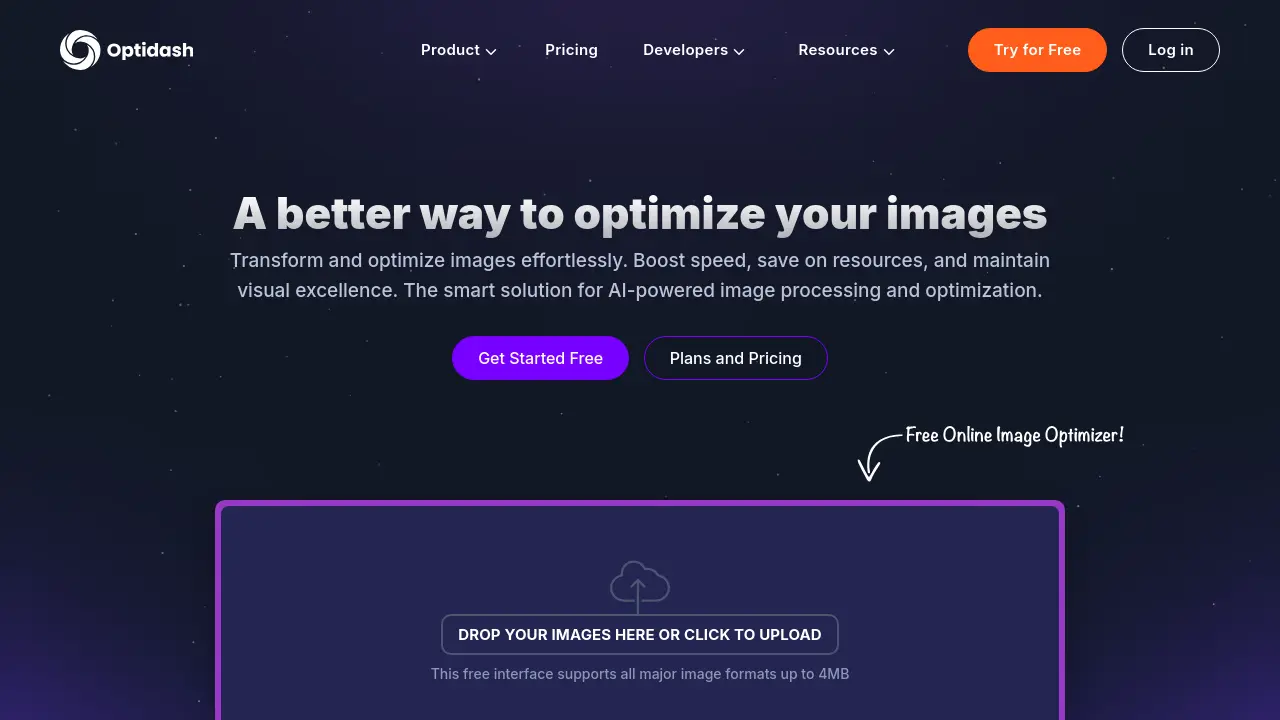Optidash
AI-powered image processing and optimization for speed and quality.

Description
Optidash provides an advanced solution for optimizing and transforming digital images. It leverages AI to process visuals efficiently, reducing file sizes while preserving quality, which helps speed up websites and applications. This tool offers both a user-friendly web interface for manual adjustments and a powerful API for automated workflows, catering to various image processing needs.
The platform supports essential functions like resizing, adjusting styles, and applying watermarks, aiming to improve website performance metrics such as Google rankings and user engagement. Optidash also focuses on cost savings by reducing bandwidth and storage requirements. It includes features for team collaboration and security, making it suitable for businesses managing large volumes of visual content.
Key Features
- AI-Powered Optimization: Reduces image file sizes significantly while maintaining visual quality.
- Image Transformation Suite: Resize, adjust saturation, apply watermarks, add borders, and stylize visuals.
- Developer API: Automate image processing with robust API, client libraries (Node, Go, Ruby, Python, PHP, Java), and webhooks.
- Web Interface: User-friendly dashboard for manual image optimization and management.
- Cloud Storage Integration: Seamlessly connect and store optimized images in major cloud providers (AWS, GCP, Azure).
- Team Management: Collaborate with unlimited team members using role-based access control (no per-seat charge).
- Enhanced Security: Features 2FA and SAML SSO for secure account access.
- Unlimited Cloud Storage: Available for paying users.
- Detailed Reporting & Logs: Monitor API usage and track account activity.
Use Cases
- Speeding up website and application load times.
- Reducing hosting bandwidth and storage costs.
- Improving SEO rankings through faster site speed.
- Automating image processing workflows for large image volumes.
- Managing and optimizing design assets.
- Enhancing e-commerce product image delivery.
- Maintaining visual consistency across platforms.
You Might Also Like
AI ChatMentor
OtherElevate Your Writing to Art with AI ChatMentor
TextMan
Pay OnceSelect, Detect, and Paste Text from Anywhere on Your Screen
Tetra
Free TrialNever take call notes again.
Influencer Marketing Hub
FreemiumThe leading resource for Influencer Marketing, Social Media, AI Marketing, and more.
telescope.co
Contact for PricingGenerative Intelligence for Finance